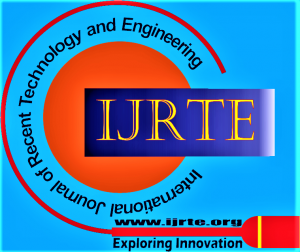![]()
Machine Translation on Dravidian Languages
B. V. Kiranmayee1, Raparthi Sai Priya2, Rayapurthi Vijaya3, Palthiya Suresh4, Regulapati Venkat Goutham5
1Dr. B. V. Kiranmayee, Department of Computer Science and Engineering, VNR Vignana Jyothi Institute of Engineering and Technology, Hyderabad (Telangana), India.
2Palthiya Suresh, Department of Computer Science and Engineering, VNR Vignana Jyothi Institute of Engineering and Technology, Hyderabad (Telangana), India.
3Raparthi Sai Priya, Department of Computer Science and Engineering, VNR Vignana Jyothi Institute of Engineering and Technology, Hyderabad (Telangana), India.
4Rayapurthi Vijaya, Department of Computer Science and Engineering, VNR Vignana Jyothi Institute of Engineering and Technology, Hyderabad (Telangana), India.
5Regulapati Venkat Goutham, Department of Computer Science and Engineering, VNR Vignana Jyothi Institute of Engineering and Technology, Hyderabad (Telangana), India.
Manuscript received on 15 March 2023 | Revised Manuscript received on 22 March 2023 | Manuscript Accepted on 15 May 2023 | Manuscript published on 30 May 2023 | PP: 1-14 | Volume-12 Issue-1, May 2023 | Retrieval Number: 100.1/ijrte.A75380512123 | DOI: 10.35940/ijrte.A7538.0512123
Open Access | Editorial and Publishing Policies | Cite | Zenodo | Indexing and Abstracting
© The Authors. Blue Eyes Intelligence Engineering and Sciences Publication (BEIESP). This is an open access article under the CC-BY-NC-ND license (http://creativecommons.org/licenses/by-nc-nd/4.0/)
Abstract: The Dravidian languages are spoken all over the world. Despite their distinctiveness, Dravidian languages haven’t gotten much attention because there aren’t enough resources to handle tasks like translation that require language technology. Since Dravidian languages are primarily spoken in southern India, machine translation is necessary. For those who speak these regional languages, this would improve information creation and access. It can be challenging to translate between languages, particularly those of the Dravidian family, due to lexical divergence, ambiguity, and other lexical, syntactic, and semantic issues. This research examines several machine translation models for various languages, conducts a comprehensive literature review on the diverse machine translation techniques from earlier studies, and analyses their methodologies. The primary objective of this research is to evaluate the viability and effectiveness of a machine translation process for Dravidian languages.
Keywords: Linguistic Rules, Long Term Dependencies, Bilingual Text Corpora, BLEU Metric, Language Embedding, Translation Memory, and Parallel Corpora.
Scope of the Article: Natural Language Processing and Machine Translation
